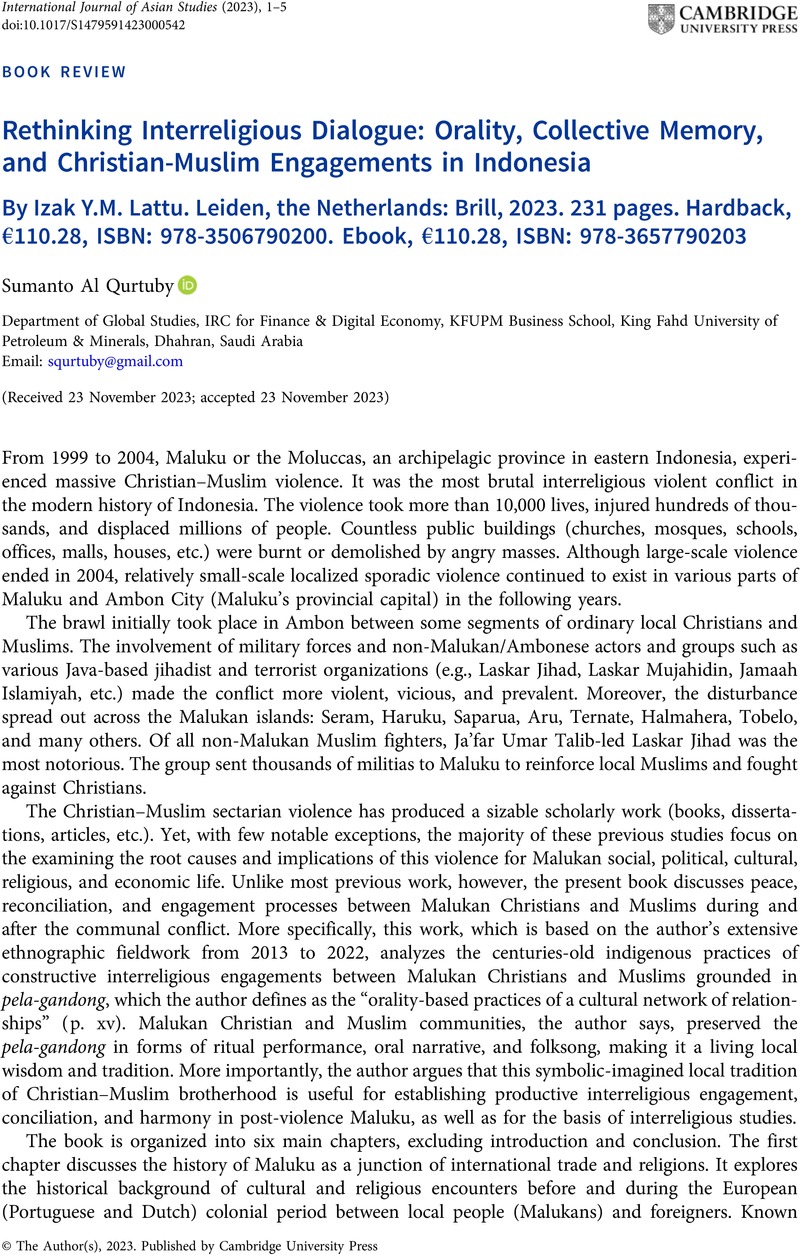No CrossRef data available.
Article contents
Rethinking Interreligious Dialogue: Orality, Collective Memory, and Christian-Muslim Engagements in Indonesia By Izak Y.M. Lattu. Leiden, the Netherlands: Brill, 2023. 231 pages. Hardback, €110.28, ISBN: 978-3506790200. Ebook, €110.28, ISBN: 978-3657790203
Review products
Rethinking Interreligious Dialogue: Orality, Collective Memory, and Christian-Muslim Engagements in Indonesia By Izak Y.M. Lattu. Leiden, the Netherlands: Brill, 2023. 231 pages. Hardback, €110.28, ISBN: 978-3506790200. Ebook, €110.28, ISBN: 978-3657790203
Published online by Cambridge University Press: 15 December 2023
Abstract
An abstract is not available for this content so a preview has been provided. Please use the Get access link above for information on how to access this content.

- Type
- Book Review
- Information
- Copyright
- Copyright © The Author(s), 2023. Published by Cambridge University Press



